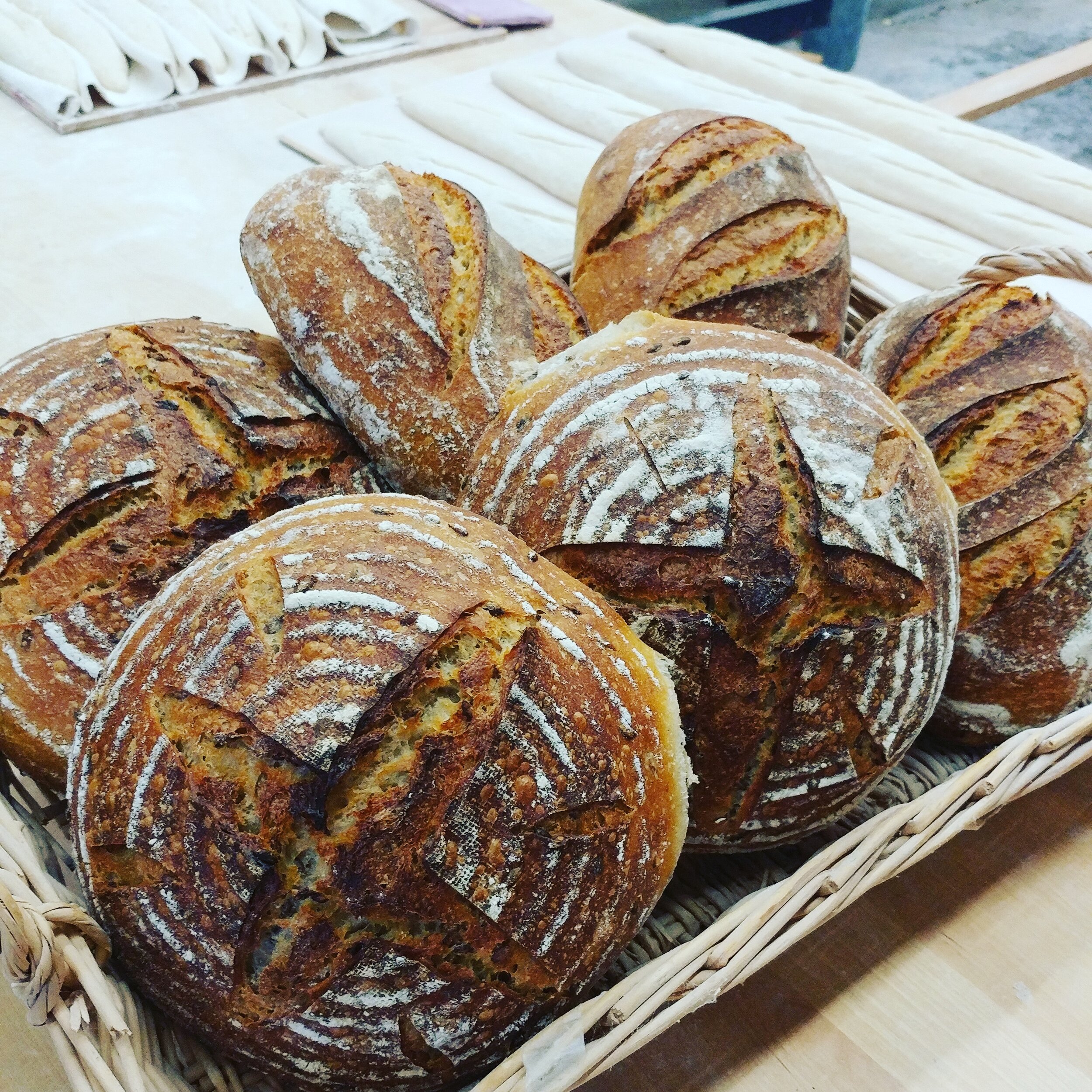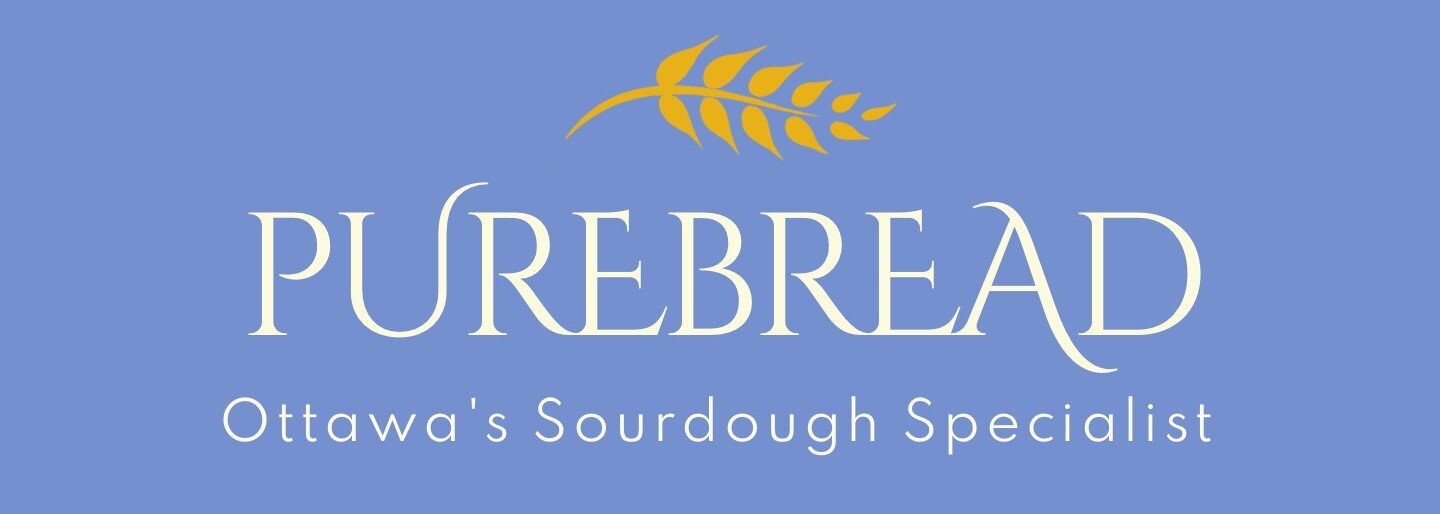Our story
Purebread baker Andy Lofthouse trained in his home town of Edinburgh, Scotland, with the founder of the UK’s Real Bread Campaign. He started Purebread from his Ottawa home kitchen in 2013, one week after his arrival in Canada. The bakery has since moved several times as it has grown, with spells at Hintonburg's much-missed Back Lane Cafe, the basement kitchen of the welcoming Centretown United Church, and Little Italy's Victory Caffe, before finding its permanent production facility in Ottawa's east end.
Sourdough loaves resting on the bench.
Ready to go!
Full oven load.
During Purebread's residence at the Centretown United Church, film maker (and Purebread customer) Patrick Lesage shot this short piece and talked to Andy about his passion for traditional bread.
What is naturally leavened bread?
From the dawn of civilisation until the industrial age making dough with wild yeast – also known as sourdough – was the primary method of bread baking. But in the late 19th century baker’s yeast was developed and large-scale industrial baking soon flourished. Industrial bread is now leavened with commercial yeast and spiked with enzymes, preservatives and other dough “improvers”. Loaves are made to rise rapidly, reducing the quality, taste and nutritional content of bread.
Creating sourdough bread takes days. From leaven to loaf, the process is slow and entirely natural. First the sourdough culture is nourished with fresh flour and water, and the mixture is allowed to slowly ferment. That natural leaven is then used to make the dough rise. Rising is a multi-stage process that can take hours. By the time the loaf goes into the oven, it can have been up to three days in the making.
Fortunately, this lengthy production time improves the taste and quality of the bread. Sourdough is healthier too – it’s more digestible and nutritious than bread leavened with commercial yeast. This is because sourdough’s lactic acids make the vitamins and minerals in the flour more easily absorbed by the body. The acids slow down the rate at which glucose is released into the bloodstream and lower the bread's glycaemic index. They also render the gluten in the flour more digestible and less likely to cause food intolerances. To top it all off, sourdough bread tastes better and ages more gracefully, with bread staying fresher for longer.
Local partnerships
We are committed to supporting our local food production system.
Purebread is delighted to use the fabulous Red Fife flour produced by Ironwood Organics near Gananoque. Our Purebread and Red Fife Multigrain loaves bring out the terrific flavours that this great heritage wheat variety can offer. In addition, the organic flour that Ironwood supplies has an incredible advantage in nutritional content over other similar products on the market.
We have developed loaves that use some wonderful grains that are being grown by local producer Against the Grain. Our Purple Maize and Red Corn & Rosemary loaves were developed to showcase two of the exciting heritage corn varieties they are growing in our region. Flour milled from their lovely hull-less barley helps give our Spelt, Barley & Flaxseed loaf some of it's nutritional heft.
Purebread baker Andy Lofthouse talks about his work with Against the Grain in this short video.




